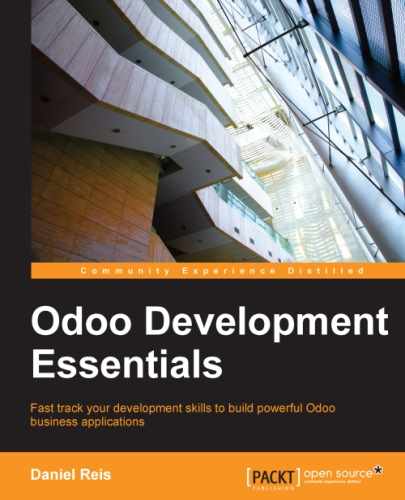Developing in Odoo most of the time means creating our own modules. In this chapter, we will create our first Odoo application, and you will learn the steps needed make it available to Odoo and install it.
Inspired by the notable todomvc.com project, we will build a simple to-do application. It should allow us to add new tasks, then mark them as completed, and finally clear the task list of all completed tasks.
You will learn how Odoo follows an MVC architecture, and we will go through the following layers during the to-do application implementation:
The model layer is defined with Python objects that have their data is stored in the PostgreSQL database. The database mapping is automatically managed by Odoo, and the mechanism responsible for this is the object relational model, (ORM).
The view layer describes the user interface. Views are defined using XML, which is used by the web client framework to generate data-aware HTML views.
The web client views perform data persistent actions by interacting with the server ORM. These can be basic operations such as write or delete, but can also invoke methods defined in the ORM Python objects, performing more complex business logic. This is what we refer to as the controller layer.
With this approach, you will be able to gradually learn about the basic building blocks that make up an application and experience the iterative process of building an Odoo module from scratch.
It's common to hear about Odoo modules and applications. But what exactly is the difference between them? Modules are building blocks of Odoo applications. A module can add or modify Odoo features. It is supported by a directory containing a manifest or descriptor file (named __openerp__.py) and the remaining files that implement its features. Sometimes, modules can also be referred to as "add-ons." Applications are not different from regular modules, but functionally, they provide a central feature, around which other modules add features or options. They provide the core elements for a functional area, such as accounting or HR, around which other modules add features. Because of this, they are highlighted in the Odoo Apps menu.
